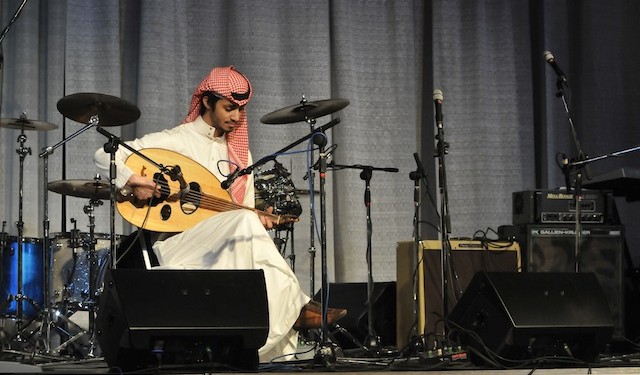One of the world’s largest scholarship schemes is a modest description of the King Abdullah Scholarship Programme (KASP) for Saudi Arabians to complete their higher education overseas. Costing some US$5 billion and counting, it was founded in 2005 to help Saudi rebuild relations with the West after the 9/11 terrorist attacks, as well as prepare for the looming challenges facing its economy.
News and business analysis for Professionals in International Education
Have some pie!
How has Saudi Arabia’s KASP impacted the sector?
 A Saudi student performs at Thompson Rivers University, Canada. 90% of Saudis studying abroad do so through the KASP
A Saudi student performs at Thompson Rivers University, Canada. 90% of Saudis studying abroad do so through the KASP These include declining oil reserves, a rapidly growing, youthful population and lagging education standards. Saudi Arabia ranked just 93rd out of 129 countries in UNESCO’S 2008 quality of education index.
The scheme has also made a huge impact on the international education landscape, funding 90% of all Saudis studying abroad (about 130,000 in 2010-11) and bolstering diversity and income at state and private sector education institutions in 22 countries.
One of the biggest surprises of this year’s Open Doors report from the Institute of International Education (IIE), USA, was that major markets Korea and India played no role in the 6% rise in enrolments to US universities in 2012. Growth came from another surge in Chinese students and a less expected leap in Saudi numbers, which climbed from 22,700 to 34,100 – some 50%.
“Saudi enrolments in the US fell to 1,008 in 2004 costing up to $40 million in revenue”
“The scheme has been established and tailored to suit Saudi society needs as far as labour, employment and infrastructure needs are concerned,” Marie Claude Svaldi, assistant director of the ESL portion of the programme at the Saudi Arabian Cultural Mission (SACM) explains. She flags subjects such as business, medicine IT and engineering that are typically studied by KASP recipients. “The social and economic demands continue to dictate the numbers of graduates necessary in every given major and degree.”
As well as funding for a three-year degree, students are also generously covered for English language training and health insurance – all of which is welcome news for Western universities, which saw Saudi enrolments collapse after the 9/11 attacks.
The US, Saudis’ destination of choice, felt this most keenly with enrolments falling to 1,008 in 2004, at a cost of up to $40 million. Fifteen of the nineteen hijackers were Saudi and some still allege Saudi government involvement in the attacks, further emphasising the need for the scheme as a bridge-building tool.
With that tide turned, some now envisage a “continued stream” of enrolments through to 2020 – KASP’s new extension date – with the sector research agency World Education Services (WES) identifying Saudi as the most important “emerging” student market for US universities in a recent report.
Others, however, warn that the scheme’s benefits are limited to a minority of universities—and that these institutions could become too reliant upon it, given so few Saudis fund their studies themselves.
The state of Florida had to stop enrolling Saudis and the UK is now said to be saturated
It is true that access to KASP is fairly narrow. Only universities in the world top 500 and language and pathway providers approved by SACM, which administers the programme, are eligible to take part. Some say this has led to an “over-concentration” of students in certain countries and campuses. The state of Florida reportedly had to stop enrolling Saudis due to overload, and the UK is now said to be “saturated”, particularly at Russell Group universities.
“Going forward the Cultural Attaché in London is likely to start paying a closer attention to where their students are going,” says Tuukka Hinttula, recruitment director for Middle East, Africa and South Asia at INTO University Partnerships, which welcomes KASP students to its US and UK university centres and pathways every year.
“For a while now the Cultural Attaché in the UK has been administering fewer number of students compared to a couple of years ago, but my understanding is that the number of students sponsored to the UK is about go up again.”
The high proportion of Saudis in need of preliminary language tuition (some 29% in the US according to IIE, more than any other national group) also restricts which universities can participate in KASP. There is a natural bias toward universities with English pathways, or Intensive English Programs in the US, leaving those without in the cold. [More>>]
Still looking? Find by category:




3 Responses to How has Saudi Arabia’s KASP impacted the sector?